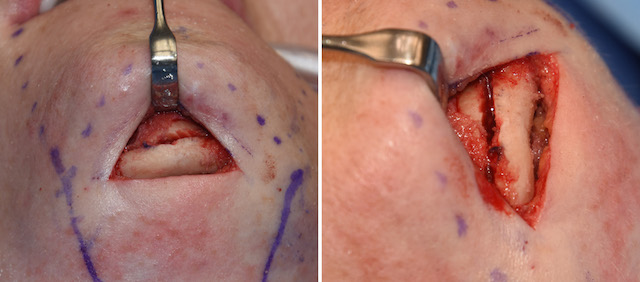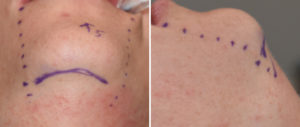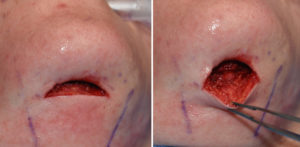Macrogenia or aesthetic large chin deformities present with numerous dimensional excesses. While most people think of a large chin as one that sticks out too far, a chin that is too vertically is also common. In many women, who are most affected by chin overgrowths, their undesired large chin is a combination of both horizontal and vertical excesses.
In a chin that is exclusively vertically long two options exist for its reduction. The intraoral osteotomy approach consists of a mid-chin horizontal bony wedge removal of the desired height reduction with the reduced lower chin segment put back together with plates and screws superiorly. The external ostectomy approach consists of s submental skin incision where the vertical bone height is reduced by removing the desired height reduction of the inferior border of the chin.
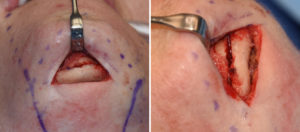
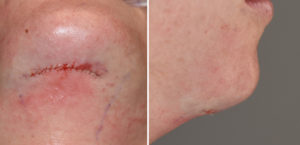
Almost all submental chin reduction techniques, which offer more versatile bony changes than that done by intraoral osteotomies, will require soft tissue reduction as well. This is challenging due to the limitations of the limited length of the incision that can be used and kept aesthetically pleasing. It is usually what causes the need for secondary revision to manage any residual soft tissues redundancies.
Dr. Barry Eppley
Indianapolis, Indiana

